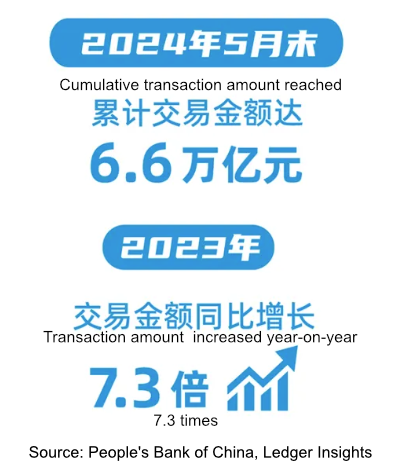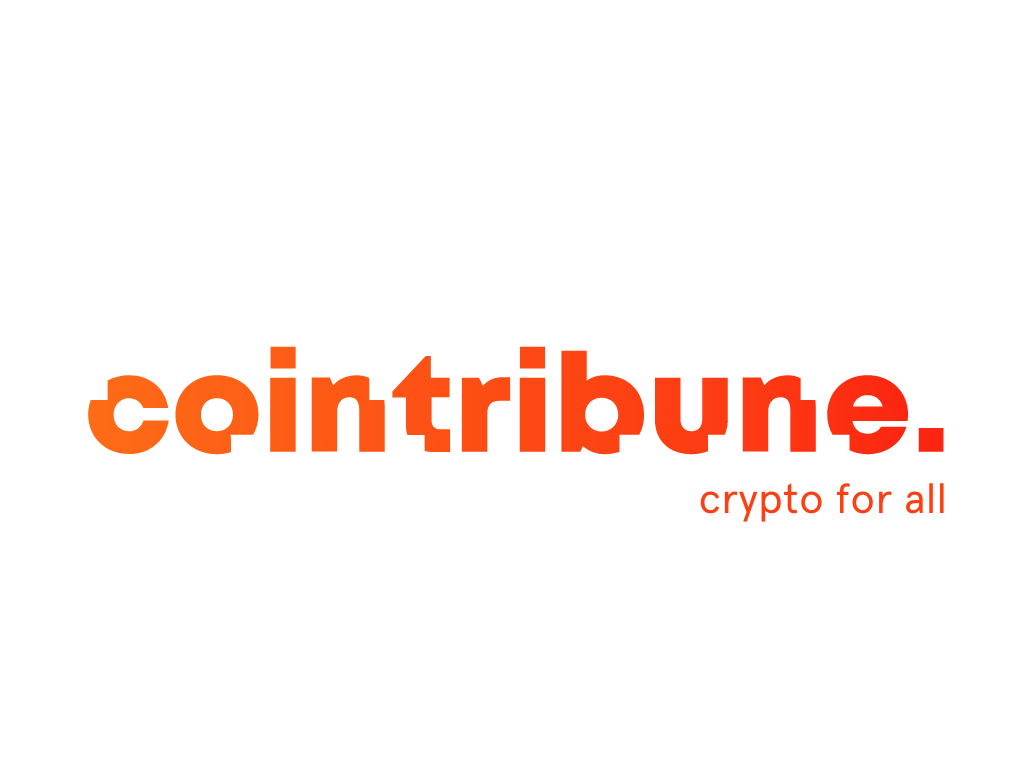Valentina Matvienko: BRICS has enormous potential and is confidently establishing itself as one of the pillars of the modern world order
— Ignorance, the root and stem of all evil (@ivan_8848) July 11, 2024
Chairman of the Federation Council Valentina Matvienko opened the plenary session of the X BRICS Parliamentary Forum. An international… pic.twitter.com/q0t29B6sOi
The Digital Yuan is a Disaster
3h ago•
bullish:
0
bearish:
0
Share
The digital yuan does not seem to be a great success. Bad omen for CBDCs. Bitcoin remains

Little Success for the eCNY
The Chinese central bank has released the latest statistics regarding its central bank digital currency (CBDC) pilot project.
The cumulative transaction volume was a mere 6.6 billion yuan ($910 million) between January 1 and the end of May. This is a sevenfold increase compared to the previous year, but it remains a drop in the bucket compared to the 5,000 trillion yuan traded annually in China…
Additionally, the number of downloaded “wallets” has dropped from 261 million in 2021 to 120 million in 2023. The figure for 2024 has not yet been released according to Ledger Insight.

The eCNY pilot project has expanded to 26 regions in 17 provinces. Users are primarily employees of state-owned enterprises who choose to receive part of their salaries in CBDC. The reason being that they derive some benefits from it.
Some indications suggest that this CBDC could soon conclude its pilot phase. The “pilot” label has indeed been removed from the application. To recall, the launch dates back to 2020. The eCNY is thus in its fifth year of testing.
The decision to remove the term “pilot” could indicate that an official launch across China is approaching. The People’s Bank of China may want to proceed for several reasons.
The first is that the demand for the eCNY is not exactly booming. China is already very well-served in terms of mobile payments thanks to WeChat Pay and Alipay. The eCNY remains less widely accepted compared to these two giants.
It is also worth noting that the tests in some provinces regarding the infamous social credit are still fresh in everyone’s mind. The Chinese are not fooled. They understand that the CBDC is a first step towards the end of cash and the control of the population through the wallet.
The evolution of the acceptability of the eCNY must be closely monitored if it does indeed gain full legal currency status.
mBridge and CBDC
The other motivation is that the new international payment network project mBridge depends on it. Chinese tourists’ payments via the eCNY could generate the necessary volumes to offer decent conversion rates.
The founding countries are China, Hong Kong, Thailand, and the United Arab Emirates, all under the aegis of the Bank for International Settlements. Saudi Arabia has recently joined the project.
The launch date of mBridge is not known, but it is rumored that the BRICS could reference it at the Kazan summit to be held in October.
The pilot of the Indian CBDC is also a failure. The volumes are meager with 100,000 transactions per day, ten times less than last December. The central bank is forced to offer incentives to attract users.
So far, only Nigeria has launched a CBDC at the national level. It is also a fiasco. The United States does not want it, and resistance is also strong in Europe.
The ECB is, however, quietly working on the “Digital Euro.” It is also an “observer member” of the mBridge project (the Fed too). Ironic when we know that CBDCs represent an alternative payment system aimed at circumventing Western sanctions.
The governor of the Russian central bank, Elvira Nabiullina, indicated at the beginning of the year that more and more countries no longer trust the Western SWIFT system. Knowing that India, Russia, and China are all members of the BRICS club, one of whose objectives is to get rid of the dollar.
The Nexus Project
The use of national currencies instead of the dollar has gained momentum since Russia was disconnected from the SWIFT network and its foreign reserves (mainly euros) were frozen.
In this regard, India has recently joined the Nexus project, also implemented under the aegis of the BIS. This system aims to accelerate retail international payments. It includes four other ASEAN member countries. India’s UPI system will be combined with the national payment systems of Malaysia, the Philippines, Singapore, and Thailand.
The Nexus project could also help resolve some problems related to India’s trade deficit with Russia. Indeed, almost all ASEAN states participating in the Nexus project maintain favorable relations with Moscow.
However, the Russian governor seems to prefer the CBDC system. Elvira Nabiullina stated she wants to promote digital assets to circumvent sanctions:
“New financial technologies create opportunities for systems that did not exist before. That’s why we have relaxed our stance on the use of cryptocurrencies in international payments, allowing the use of digital assets in payments.”
This is a reference to CBDCs, but the door is also open for Bitcoin, which enjoys relative tolerance in Russia.
BRICS Bridge vs Bitcoin
The President of the Council of the Federation of Russia, Valentina Matvienko, was ambitious during the plenary session of the 10th BRICS Parliamentary Forum:
“From 2021 to 2023, the share of the ruble in payments for Russian exports almost tripled to reach 39%. Overall, our country has increased the use of national currencies in payments with friendly countries to 75%. We will further increase the use of national currencies in our international trade payments and improve the efficiency of these transactions,” she declared.
She recalled that, following the decisions from last year’s summit in South Africa, the BRICS are working on creating a payment system. A system immune to political pressures, abuses, and external sanctions like the SWIFT network.
The result of this work could be the creation of a multilateral digital payment platform, the BRICS Bridge:
“This network will help bring closer the financial markets of the BRICS member countries and increase trade. We could use the CBDCs of the member countries. Moreover, this digital settlement and payment platform will be decentralized, and none of the participants will be able to limit the actions of others.”
If the initiative proposed by Russia is approved, the BRICS countries “will have to coordinate legislative work on the circulation of national digital currencies and its use in cross-border payments.”
So many gas factories while Bitcoin opens its arms…
There is certainly the question of payment networks, but let’s not forget the issue of an international reserve currency. The Indian rupee lacks the attributes of a reserve currency, and even the Russians are reluctant to accept it.
Bitcoin is this truly censorship-resistant store of value the world needs. It is a strong currency and at the same time a competitive payment system thanks to the Lightning Network.
As the CEO of BlackRock stated this Monday, “Bitcoin is a hedge against the devaluation of national currencies. It is digital gold.”
3h ago•
bullish:
0
bearish:
0
Share









